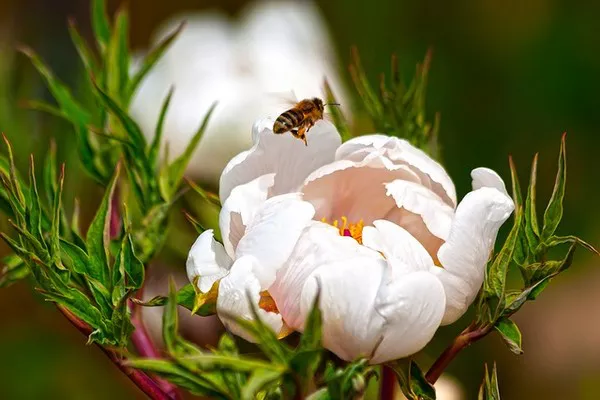Pollination is an essential ecological process crucial for the reproduction of flowering plants. Among the various agents of pollination, bees stand out as one of the most efficient and prevalent contributors. Their intricate relationship with flowering plants has fascinated scientists and enthusiasts for centuries. Understanding how bees pollinate plants not only sheds light on their remarkable behavior but also highlights their crucial role in ecosystem health and food production.
An Overview of Bee Pollination
Bees, belonging to the order Hymenoptera, have coevolved with flowering plants over millions of years, leading to specialized adaptations that facilitate efficient pollination. While other insects and animals also contribute to pollination, bees are particularly noteworthy due to their unique characteristics and behaviors.
Bee Behavior and Pollination
Bees are known for their complex social structures and remarkable foraging behaviors. The process of bee pollination begins when forager bees, primarily female worker bees, leave their hives in search of floral resources such as nectar and pollen. During this quest for food, bees inadvertently transfer pollen grains from the male reproductive structures (anthers) of one flower to the female reproductive structures (stigmas) of another flower, thereby facilitating fertilization and subsequent seed production.
Floral Attraction and Recognition
Bees are highly selective in their foraging preferences, demonstrating a remarkable ability to identify and prioritize flowers based on various cues such as color, shape, scent, and nectar rewards. Certain bee species exhibit flower constancy, repeatedly visiting flowers of the same species during a foraging trip, which enhances the efficiency of pollination by reducing pollen wastage.
Mechanisms of Pollen Transfer
The process of pollen transfer by bees involves several intricate mechanisms. As bees forage for nectar, they inadvertently come into contact with the reproductive structures of flowers. Pollen grains adhere to the bee’s body due to electrostatic forces or by becoming entangled in the branched body hairs known as setae. These grains are then transported to subsequent flowers visited by the bee, where they are deposited on the stigmas during the process of nectar collection or pollen grooming.
Pollination Efficiency and Effectiveness
The effectiveness of bee pollination varies depending on factors such as bee species, floral morphology, and environmental conditions. Certain bee species, such as bumblebees and solitary bees, exhibit specialized behaviors such as buzz pollination, where they vibrate their flight muscles to release pollen from tightly held anthers, thus improving pollination efficiency for specific plant species such as tomatoes and blueberries.
Ecological Significance of Bee Pollination
The ecological significance of bee pollination extends far beyond the reproductive success of individual plant species. Bees play a crucial role in maintaining biodiversity, ecosystem stability, and the provision of ecosystem services such as crop pollination. Approximately 75% of leading global food crops depend, at least in part, on animal pollination, with bees being the most significant contributors.
Economic Importance of Bee Pollination
The economic importance of bee pollination cannot be overstated, particularly in the context of agricultural production. Commercial beekeeping operations provide essential pollination services to numerous crops, including fruits, vegetables, nuts, and oilseeds, contributing billions of dollars annually to global agricultural economies. The decline in bee populations due to various factors, including habitat loss, pesticide use, and climate change, poses significant risks to agricultural productivity and food security.
Conservation Implications and Future Perspectives
Efforts to conserve bee populations and their habitats are critical for ensuring the continued provision of pollination services and the preservation of biodiversity. Conservation measures may include the establishment of protected areas, the implementation of sustainable agricultural practices, and the reduction of pesticide usage. Public awareness and education campaigns can also play a crucial role in promoting bee-friendly behaviors and fostering appreciation for the importance of pollinators in maintaining healthy ecosystems.
Conclusion
In conclusion, bees play a vital role in the pollination of flowering plants through their remarkable behaviors and specialized adaptations. By understanding the mechanisms of bee pollination, we can appreciate the intricate ecological relationships that underpin ecosystem functioning and agricultural productivity. Efforts to conserve bee populations are essential for safeguarding biodiversity, ensuring food security, and promoting sustainable development in a rapidly changing world.

